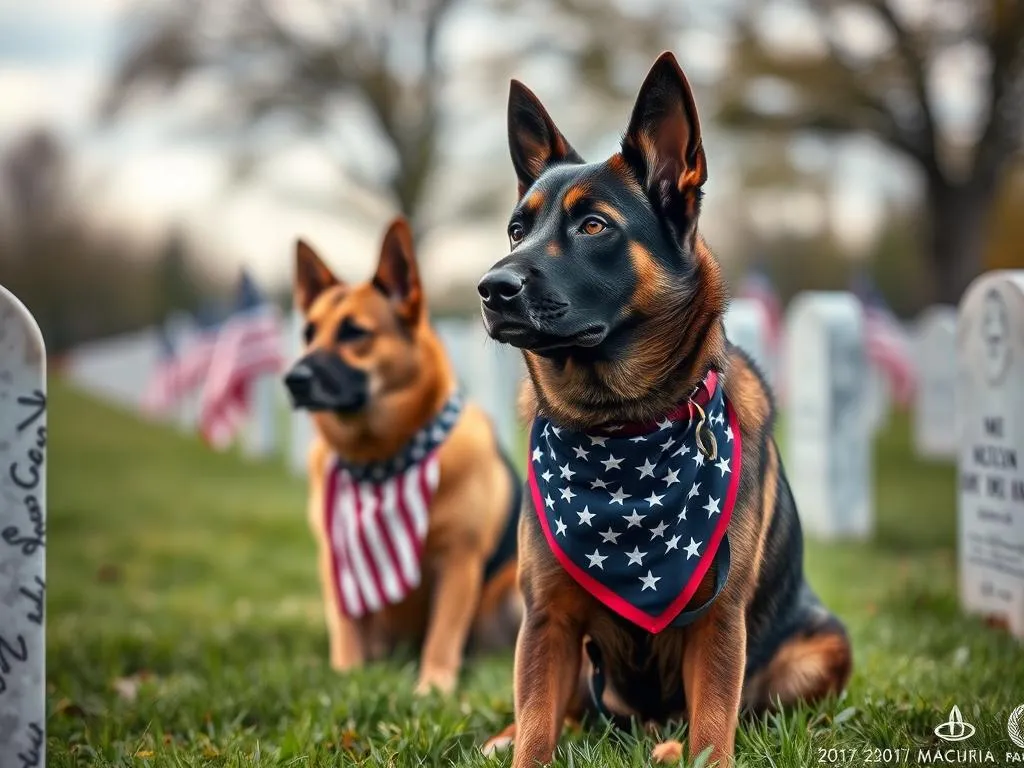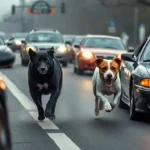
Introduction
As Memorial Day approaches, communities across the nation prepare to honor the brave men and women who have served in the military. This significant day serves as a poignant reminder of the sacrifices made by service members in the line of duty. While we often focus on the valor of human soldiers, a vital group that deserves equal recognition is our canine companions—the military dogs. These courageous animals play an essential role in various military operations, often risking their lives alongside their human partners. This article serves as a Memorial Day tribute to military dogs, celebrating their contributions, sacrifices, and the legacy they leave behind.
The History of Military Dogs
Early Use of Dogs in Warfare
The bond between humans and dogs has existed for thousands of years, dating back to ancient civilizations. Dogs have been employed in warfare since the time of the Romans, who utilized them as sentinels and attack animals. The use of dogs in battle continued through the centuries, with notable examples appearing in both World Wars. In World War I, dogs served as messengers, carrying vital information across the trenches, while in World War II, they were utilized for tracking, guarding, and even detecting explosives.
Evolution of Roles Over Time
As warfare evolved, so too did the roles of military dogs. Their duties expanded beyond messengers and guards to include tracking enemy movements, detecting mines, and searching for wounded soldiers. The Vietnam War saw a significant increase in the deployment of dogs, particularly Combat Tracker Dogs, who proved invaluable in locating Viet Cong soldiers hidden in dense jungles. Military dogs have continually adapted to the changing needs of armed forces, showcasing their versatility and intelligence.
Recognition in Military History
Throughout history, military dogs have received formal recognition for their remarkable contributions. The United States War Dogs Association honors these brave canines with awards such as the PDSA Dickin Medal, often referred to as the “animal Victoria Cross.” This prestigious award recognizes the acts of bravery performed by dogs during military operations. Their place in military history is not just as tools of war but as heroes in their own right.
Types of Military Dogs and Their Roles
Service Dog Categories
Military dogs are trained for specific roles, each with unique skills tailored to their assignments. Common categories include:
- Combat Tracker Dogs: These dogs are trained to track enemy movements and locate hidden individuals.
- Explosive Detection Dogs: Specializing in identifying explosives, these dogs are crucial in preventing attacks and ensuring troop safety.
- Search and Rescue Dogs: Deployed in disaster relief efforts, these dogs locate missing persons or survivors in rubble and challenging environments.
Training and Skills
The training process for military dogs is rigorous and comprehensive. It involves socialization, obedience training, and specialized skills development. A typical training program includes scent detection exercises, agility courses, and real-world simulation scenarios. The bond between the dog and handler is essential, as trust and communication are critical for success. Military dogs must exhibit high levels of obedience, agility, and scent detection ability to perform effectively in their roles.
Notable Military Dogs
Throughout history, several military dogs have become legends due to their heroic actions. One such dog is Sergeant Stubby, who served in World War I and is credited with saving countless lives by alerting troops to incoming attacks. Another famous canine hero is Rex, who served in the Vietnam War and became a symbol of loyalty and bravery. These dogs have not only made significant contributions to military operations but have also inspired countless stories of courage.
The Bond Between Military Dogs and Handlers
The Human-Animal Connection
The connection between military dogs and their handlers is profound and deeply emotional. Handlers often describe their dogs as family members, providing companionship and support during challenging times. The presence of these canine companions can help alleviate stress and anxiety for soldiers, offering a source of comfort and loyalty in high-pressure environments.
Stories of Loyalty and Heroism
Numerous anecdotes illustrate the extraordinary loyalty of military dogs. One handler recounted a story where their dog, while on patrol, detected an ambush ahead and alerted the team, saving lives. In another instance, a dog sustained injuries while protecting its handler from enemy fire, showcasing unparalleled bravery. These stories highlight the incredible bond formed between humans and their canine counterparts, as well as the sacrifices they make in service to their country.
Post-Service Life for Military Dogs
Upon retirement, many military dogs face challenges in transitioning to civilian life. Fortunately, several organizations have dedicated themselves to finding loving homes for these heroes. Adoption programs often provide support for retired military dogs, ensuring they receive the care they need. However, some retired dogs may struggle with anxiety or health issues, requiring special attention and training to adapt to their new lives.
Honoring Military Dogs on Memorial Day
Memorial Day Traditions
Memorial Day is a time for reflection and gratitude, marked by various traditions such as parades, ceremonies, and the decoration of graves. While the day primarily honors human veterans, it is increasingly recognized as an opportunity to acknowledge the sacrifices made by military dogs. Many communities are beginning to incorporate tributes to these animals into their Memorial Day observances.
Commemorative Events and Activities
Across the country, organizations host events dedicated to honoring military dogs on Memorial Day. These activities often include memorial services, dog parades, and educational programs that highlight the contributions of these canines in military history. Groups like the United States War Dogs Association and local humane societies frequently organize events that bring together veterans, their families, and supporters to pay tribute to military dogs.
Ways Individuals Can Pay Tribute
Individuals can also participate in honoring military dogs on Memorial Day. Here are some suggestions:
- Donate to Military Dog Charities: Contributing to organizations that support the welfare of military dogs is a meaningful way to show appreciation.
- Social Media Tributes: Share stories or photos of military dogs on social media platforms using hashtags like #MilitaryDogs and #MemorialDayTribute.
- Attend Local Events: Participating in local parades or ceremonies can help raise awareness and foster community spirit in honoring these heroes.
Organizations and Resources
Nonprofits and Charities
Several organizations focus on the welfare of military dogs, offering support to retired canines and their handlers. Notable groups include:
- K9s for Warriors: This organization provides service dogs to veterans suffering from PTSD, traumatic brain injury, and other military-related challenges.
- American Humane: With a mission to promote the welfare of animals, American Humane works to ensure that military dogs receive the care and support they deserve.
These organizations rely on donations and volunteers to continue their important work in honoring and supporting military dogs.
Educational Resources
For those interested in learning more about military dogs, various resources are available, including books, documentaries, and websites that delve into their history, training, and contributions. These educational materials provide valuable insights into the lives of these incredible animals and their impact on military history.
Getting Involved
Readers looking to make a difference can explore volunteer opportunities with military dog organizations. Many nonprofits welcome assistance with fundraising events, educational outreach, and fostering retired military dogs. Engaging with these organizations not only helps improve the lives of military dogs but also fosters a sense of community among those who share a passion for these brave canines.
Conclusion
The legacy of military dogs is a testament to their bravery, loyalty, and unwavering commitment to their human partners. As we gather to honor the sacrifices of our military service members this Memorial Day, let us not forget the incredible contributions made by these canine heroes. A Memorial Day tribute to military dogs serves as a powerful reminder of the deep bond between humans and animals, encouraging us to recognize and celebrate the sacrifices made by these loyal companions.
By participating in Memorial Day tributes, supporting organizations dedicated to their welfare, and sharing stories of their heroism, we can ensure that the legacy of military dogs lives on in our hearts and communities. Together, let’s honor these remarkable animals who have served alongside our bravest, acknowledging their sacrifices and contributions to our freedom.









